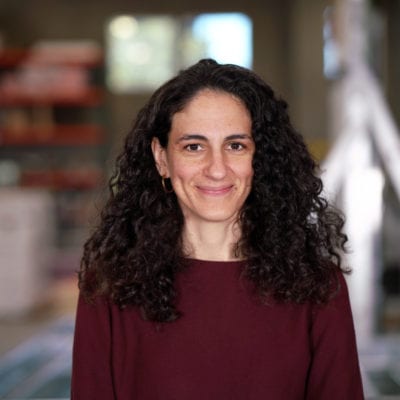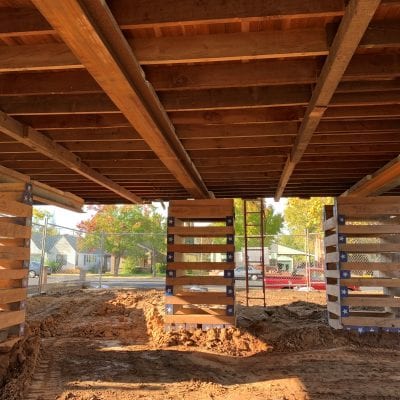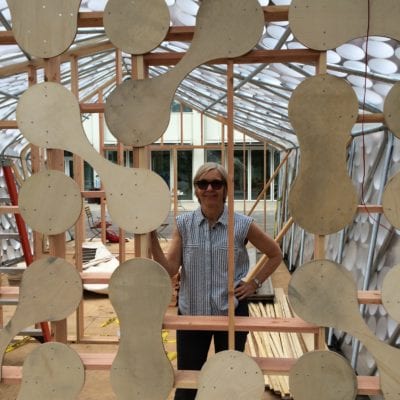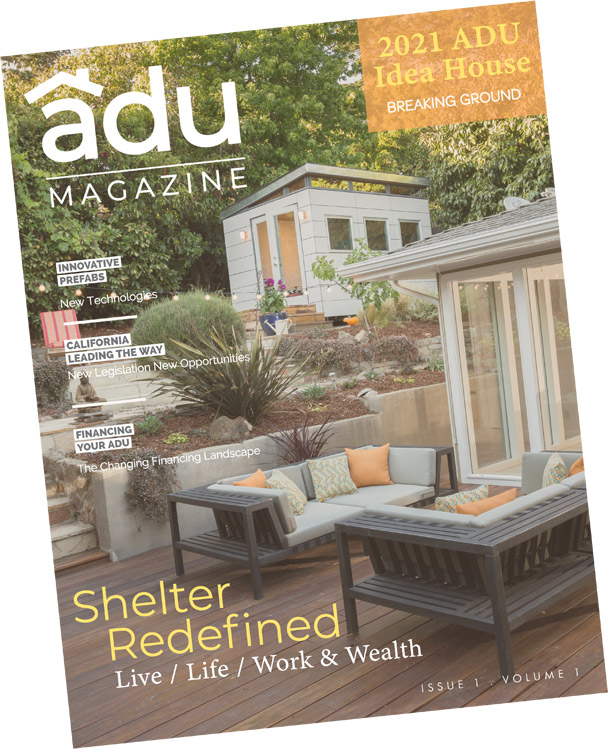Laura Friedman
A slew of California legislators have written laws in recent years that have helped popularize accessory dwelling units (ADUs) in the state. One of the leaders of the ADU movement is Assemblymember Laura Friedman, a Democrat from the 43rd Assembly District.
Friedman spoke with ADU Magazine about her legislation and the current ADU landscape in California. Following find selected highlights and excerpts from that Question and Answer session.

It’s about all housing. It’s a huge crisis in Los Angeles and it seems like ADUs were a great way to invite more people into our single-family neighborhoods in a way that’s certainly not disruptive to local, prevailing development standards and patterns. There’s already a lot of guest houses in a lot of our older neighborhoods and a lot of interest from homeowners of being part of the housing solution.
– Laura Friedman
ADU Magazine: What are the big ADU bills that you’ve done?
Laura Friedman: I did a couple of bills. I did one that will require cities to plan for low-income ADUs and allows them to use some of their affordable housing dollars to help subsidize incomes to the affordable housing. So to basically try to encourage public-private partnerships where cities can invest in ADUs on their residents’ private properties that can then be used as low-income rentals. So that was one bill that we did.
We did another bill with our low-income… developers to subdivide lots to build an ADU that can either be sold or retained as rentals. (Also) we did a bill that forbids HOAs from… putting undue restrictions on ADUs.
ADU: What was your impetus to get involved in these bills? Was it strictly about affordable housing or were there other considerations?
LF: It’s about all housing. It’s a huge crisis in Los Angeles and it seems like ADUs were a great way to invite more people into our single-family neighborhoods in a way that’s certainly not disruptive to local, prevailing development standards and patterns. There’s already a lot of guest houses in a lot of our older neighborhoods and a lot of interest from homeowners of being part of the housing solution.
To me, ADUs are a very democratizing element because they give individual homeowners, rather than developers, the chance to offer housing.
ADU: A number of different people in the Legislature have been working on ADU legislation in recent years. How much have you been working with some of the other legislators who’ve been active in ADU legislation?
LF: We certainly have a group of people who work on housing frequently and it’s a pleasure to work with them. We try to make sure we’re doing work that’s complementing each other so that we have a complete package. And so certainly, work with David Chiu, who’s chair of the Housing Committee and other folks in Los Angeles on these issues.
ADU: When did ADUs come on your radar? Would it have been maybe five years ago? When did they become one of the issues for you?
LF: Housing’s been on my radar for quite awhile. I was on the city council for eight years in Glendale and housing has certainly been a huge issue. We worked a lot on affordable housing and just development in general is always a big issue in local government.
The ADU issue itself I didn’t become as familiar with until I was in the Legislature, until I saw the work that Richard Bloom and others were doing on ADUs. I thought it was great. When I would talk to my cities, for them, they thought it was a better tool than building apartment buildings, let’s say, in single-family neighborhoods. They felt like it was a good way to get more housing built less expensively and in a way that didn’t disrupt what they already had in place with zoning.
So, my goal was to remove barriers and try to make the ADUs as accessible to as many people as possible.
ADU: What sort of barriers have been key to remove?
LF: I can tell you that in a lot of my communities, parking is still a barrier. There’s still a lot of cities, including my own, that require you to add parking on-site to add an ADU which they don’t do if — you can put as many people in a house as you want, but as soon as you build an ADU, they want you to put parking in. That becomes way too much of a barrier for most people. This is even in neighborhoods where there’s no parking issue.
ADU: What about expanding access for lower incomes and communities of color, what sort of things need to happen for them to be more accessible for those groups?
LF: Well not requiring parking on-site, not requiring expensive upgrades, not charging very exorbitant fees is a start. But then the bill we passed… that invests in ADUs for affordable housing was definitely, that was our intention to allow ADUs to be built in more of our communities.
ADU: Aside from the parking barriers, what other barriers are there still for making ADUs more popular? I know one thing I’ve talked to people about is the financing barriers. It sounds like there’s still some stuff to go on that.
LF: The financing barriers. They’re still expensive to build. I mean, they’re still prohibitively expensive in a lot of areas. That’s why having prefab ADUs that are pre-approved would be a help.
But still, a lot of times, building fresh just given the lack of contractors in the state right now and sometimes given the codes with foundation work and other type of work, it’s extremely, extremely expensive. I’ve seen people getting quotes for $300,000 to $400,000 to build ADUs. It’s just too much…
We’ve got to find ways of bringing the price down. I think if you have a flat lot and you’re doing a garage conversion, it may not be that much. But if you’re on a hillside lot, or an odd lot, or you’ve got to drop a water line in, it goes into the tens or hundreds of thousands very quickly for a lot of that work.
ADU: When you look out at the landscape of ADUs and how they seem to be really having a moment right now, are you proud of the work that you guys have been doing to legitimatize them in recent years?
LF: Absolutely. We’re adding quite a bit of housing with them and in a way that is… increasing (homeowners’) assets and giving a lot of people opportunities to build housing for their own parents, their own extended family, their own children, and allowing people to remain in their communities. I think it’s a great solution that really adds to our communities.
ADU: What’s the different between an ADU and JADU?
LF: The JADU is normally inside someone’s home and it doesn’t have to have a full kitchen. So, it’s kind of a smaller unit. More modest, smaller sometimes. It can have a much more limited kitchen.
*This interview has been edited for length and clarity.
- Graham Womackhttps://adumagazine.com/author/graham-womack/
- Graham Womackhttps://adumagazine.com/author/graham-womack/
- Graham Womackhttps://adumagazine.com/author/graham-womack/
- Graham Womackhttps://adumagazine.com/author/graham-womack/








